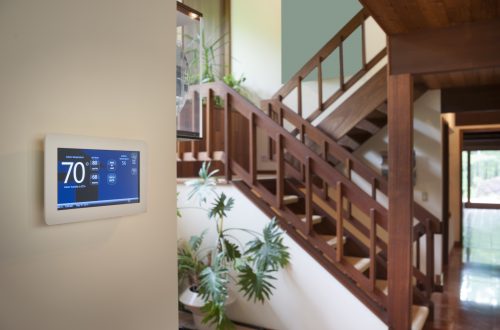During the sweltering summer, it can be hard to put a price on comfort. But the sweet relief of air conditioning does come at a cost, and the bills get bigger as the days get hotter.
Air conditioning can easily account for more than half of your electric bill this time of year. If you’re watching your budget, you might want to estimate how much you’re paying to keep cool, as well as try some new strategies to minimize those costs.
How Much Does Central Air Cost to Install?
Before we get into operating costs, let’s take a quick look at what it costs to get a central air conditioner up and running. In most homes built within the last 50 years, ductwork is built into the walls and attic. Even if the existing ductwork needs repairs, just having it in place will save thousands of dollars, dozens of labor hours and lots of cutting into walls, ceilings and floorboards. If you don’t need ductwork, the total cost of central air installation ranges from about $3,000 to $7,000. If you do need ductwork, costs can roughly double to between $7,000 and $15,000. If there are old, leaky ducts that need to be sealed, those repairs can add about $1,000 to $3,000 to the total expense. Besides ductwork, the major factors that can affect installation costs are the size of the home (which determines the size and cost of the unit), the complexity of the installation and the time of year, as many HVAC installers offer AC installation discounts in the colder months.How Much Electricity Does Central Air Use?
Because of the number of factors at play, there is no one-size-fits-all estimate for how much it costs to cool a home. These are just a few of the elements that can have a major effect on the monthly cost of air conditioning:- Size of air conditioner
- Age of air conditioner
- Square footage of home
- Climate
- Thermostat setting
- Price per kWh of electricity
- Insulation quality
- Single-pane or multi-pane windows
How to Calculate the Cost of Using Central Air
You can find your air conditioner’s wattage by checking the original documentation or finding a label on the unit itself that lists technical specs. If you can’t find either, but you have a model number, you can use it to find the original documentation online. As a last resort, you can call the technicians who installed the unit to ask for information. Most central air conditioners consume between 3,000 and 6,000 watts.
Estimating how often your air conditioner runs is the tricky part, especially since it’s always changing along with weather conditions. Try tracking the number of minutes your air conditioner runs in one hour. Do this once during the hottest part of the day and again after dark. Multiply both numbers by 12, add them together and divide by 60 for a rough estimate of the number of hours your unit runs each day.
Finally, finding your kWh rate is easy -- it’s printed on your monthly electric bill.
To calculate your estimated air conditioning costs, start by dividing your air conditioner’s wattage by 1000 to convert it to kilowatts. Let’s say you have a 4,000-watt unit:
4,000 watts ÷ 1,000 = 4 kilowatts
Next, multiply the number of kilowatts by the estimated number of hours your air conditioner runs per day. This shows roughly how many kilowatt hours (kWh) your air conditioner uses per day. Let’s assume your unit is currently running about eight hours per day:
4 kilowatts x 8 hours = 32 kWh
Now multiply the kWh by the price per kWh listed on your electric bill. If your rate is 12 cents per kWh:
32 kWh x $.12 = $3.84 Your air conditioner costs about $3.84 per day to run. Multiply that by 30, and you’ll find that you’re spending about $115.20 per month.
Tips on How to Save Energy with Your Air Conditioner
If your air conditioner is old and inefficient, you can likely create a big drop in your monthly cooling bills by upgrading to a new, modern unit. And if you live in an area with electricity deregulation, you may also be able to reduce your bills by shopping around for a lower kWh rate. But the one air conditioning cost factor we have the most control over is how often our air conditioners run. Here are some simple, effective tips for minimizing the frequency of your air conditioning cycles:- Upgrade your attic insulation, if necessary. The amount and type of insulation you need varies by region.
- Install a smart thermostat, which allows you to set detailed cooling schedules and control your thermostat from anywhere using your smartphone.
- Use reflective window shades or curtains on sun-facing windows during the day.
- Use ceiling fans to help you stay cool while setting the thermostat a few degrees higher.
- Have your air conditioner tuned up before each cooling season to make sure it’s running at peak efficiency.
- Avoid using heat-producing appliances like ovens and dryers during the hottest hours of the day.
- Replace or clean the air filter regularly.

